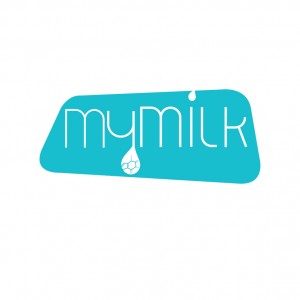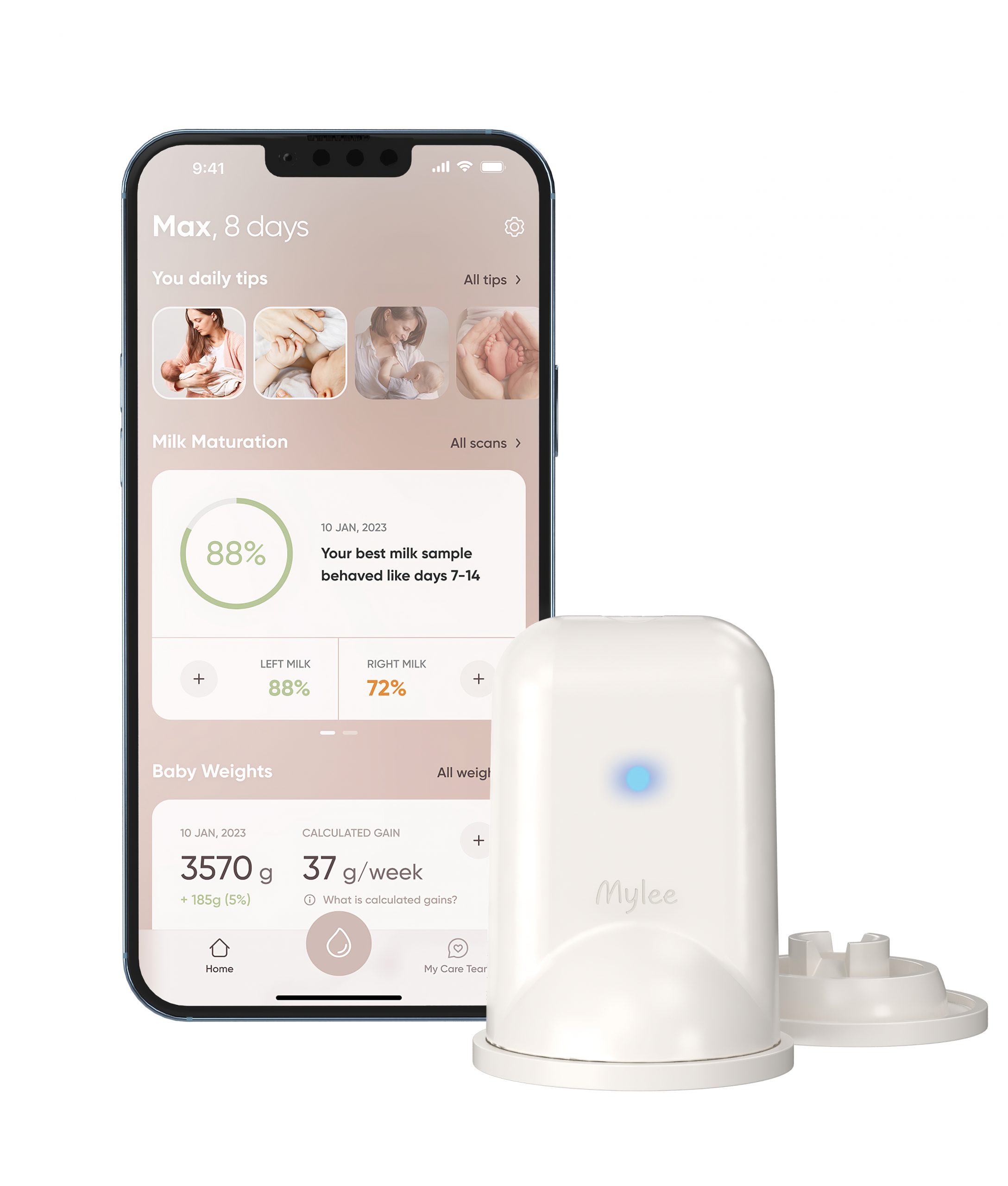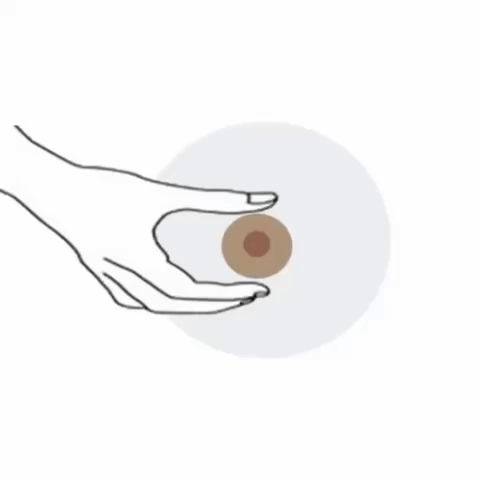

By inserting just several milk drops into the device daily, and app interaction, you can see your day-to-day progress and get personal tips.
The MyLee is in beta testing. You can join!
In the first weeks of breastfeeding, milk is produced in the mother’s breast through a demand and supply mechanism, so that the mother develops the breast infrastructure for milk production and produces milk in accordance with the latch and milk transfer stimulus. But this does not happen over-night, it is a process. In accordance with the information received in these first two weeks of breastfeeding, milk production infrastructure in the breast is adjusted to produce an appropriate amount also longer term in the third stage of breastfeeding (from the age of several weeks).
Due to the adjustment of the milk production capacity according to the initial conditions, the management of breastfeeding in the first days may greatly affect the continuation of breastfeeding and in some cases even directly affect the success of exclusive breastfeeding for the entire recommended period.
So, these first weeks after birth are a unique window of opportunity.
We created a series to support your knowledge on breastfeeding establishment for good milk supply- prenatally, in the first days after birth, and at home after hospital stay. You can also get the full guide PDF to your mailbox. This part focus on setting expectation, learning the basics, and focus on hand expression and skin to skin contact.
Mothers need accurate, careful guidance in milk supply calibration for the critical sensitive period during the first 2 weeks postpartum. Failure to stimulate sufficiently during this phase may prevent these mothers from establishing adequate lactation
Wilson-Clay & Hoover, 2013
Prepare yourself and your partner for breastfeeding. You can read books, attend online courses and groups, or consult with qualified breastfeeding consultants. The first days after birth are very emotional and sometimes physically busy, and it is important to come prepared. Breastfeeding, although natural and wonderful, is a process that requires learning by both you and your baby, and also requires determination. Cheer up. Breastfeeding is a gift of life that you can give to your baby and yourself. It’s worth the effort. And early efforts pays off by making things easier in the longer term.
While your baby is growing inside you, your breasts undergo changes as part of the preparation for breastfeeding. The breasts get bigger, they may itch, become sensitive to touch or swollen. All of these are normal indicators that your body is preparing for milk production. There is usually no special need for you to do anything to prepare your breasts for breastfeeding. There is no need to wash or rinse the breast too much. The areola may seem covered in a fatty layer, It is a natural process that aims to prepare the breast for breastfeeding. Getting familiar with touching your breast and areola areas may make this touch more natural for you after birth.
In case your breasts do not change during pregnancy, this does not necessarily indicate future breastfeeding problems, but it is important that you share this information with a breastfeeding professional.
Some women start having some colostrum leaking already during pregnancy, this is a normal phenomenon, but it is also completely normal to have no leaks at all.
Flat and inverted nipples. In the case of non-protruding nipples, it is important that you are familiar with the options for assisting the nipple out. Some mothers with flat or inverted nipples don’t seem to have any problems with breastfeeding, but others do, so early information and preparation will better prepare you for dealing with possible challenges.
Ointments. Prepare in advance, before giving birth in the hospital, with measures for preventing and treating nipple pain. Lanolin-based ointments are designed to prevent dehydration and cracks and also prevent nipple adhesion to nursing pads, and there is no need to wash these type of ointments before latching.
The more you breastfeed, and the more efficient each feed is, the more milk will be produced. Scheduling feeds, use of formula supplements, pacifiers use and other factors that reduce the time the baby spends feeding at the breast may inhibit milk production.
Wambach & Riordan, 2016
In the first days, your breasts produce colostrum, this is milk that is produced in the breasts starting from the third trimester of pregnancy. It is a condensed milk that contains a variety of protective immune components. Its amount in each meal is small – a few milliliters, according on the baby’s stomach, and its color is creamy-yellow, and can range from clear and transparent fluid to bluish-white.
Usually between the third day after birth (72 hours) and the fifth day the milk undergoes a visual change from colostrum to transition milk which is whiter, indicating the maturation process of the breast tissue and a transition to milk production (the professional name of the process is Lactogenesis II). The transition from colostrum to transitional milk is accompanied by an increase in the amount of milk, from a volume of less than 100 ml per day to an average of 400-600 ml per day on the fourth day after birth. This passage is commonly called the “milk coming in”. The transition is a critical stage in the normal progress of breastfeeding, which indicates the maturation of the breast to produce milk in increasing volumes.
The dynamic of this process is greatly affected by the baby’s suckling efficiency and the frequency of breast emptying. When the stimulus for milk production takes place properly, the body receives the right signals about the potential milk production needs. The more you breastfeed and the more milk is excreted from the breast, you will notice how the milk volumes increases (and you will be able to see your baby take noticeable swallows), and how the color of the milk becomes gradually more bluish-white, which is the color of the transition milk and mature milk in the first few weeks.
Research show that the earlier the milk coming in, the better are the chances for good milk supply and successful any and exclusive breastfeeding at several months after birth.






Hand expression done correctly should not be painful. It may take several trials to get comfortable. Don’t expect more than a few drops initially, it is OK! It improves with time and with practice.

During the first few days, skin-to-skin contact is of great importance, both for the success of breastfeeding and for the health of the baby. Place the baby on your chest, belly to belly, wearing only a diaper (if it is cool, cover both of your bodies with a blanket), as often as you can.
MORE FEEDS. When a baby is in skin-to-skin contact with you, the baby will suckle more often and it will be easier for you to identify when she is ready for the next breastfeeding even before she cries. This way you will be able to respond to the early signs of hunger and your baby will not have to breastfeed when she is jumpy or crying.
Breastfeeding a calm baby is easier and more pleasant for both mother and baby. Skin-to-skin contact, not only while breastfeeding, will allow you to take advantage of the first few days with your baby, to study the signs of hunger and to identify her needs and wants. This way, it will be easier for both of you to start breastfeeding on the “right foot” when the baby is relaxed and find the right position for you both.
HORMONES. contact between mother and baby triggers the release of hormones in the mothers body that signals milk production and are important for uterine contraction, and hormones in the baby’s body that are important for development and a sense of safety.
AT HOSPITAL. AT HOME. At the hospital, if you are separated for any reason, or if the baby is in NICU, skin-to-skin contact can be made, even when baby is connected to monitors and when you are both covered. If you are having a caesarean section, ask for help in a position that will not hurt you. If you place a pillow or blanket on the incision area, you can ensure that no contact will be made that could be painful to you.
It is really important to be proactive in ‘bringing the milk in’, and to increase breast stimulation and breast emptying as soon as possible to avoid further delay
In case breastfeeding is not progressing properly, either breastfeeding is not efficient, or there are latch problems, insufficient breastfeeding frequency, adding of formula, if the baby is sleepy, or the baby has problems with suckling that is related to tongue-tie for example, or in special medical circumstances (such as very difficult birth, cesarean birth, increased blood loss, certain diseases, gestational diabetes, etc.), There may be a delay in the process of milk maturation.
A certain delay in the timing of ‘milk coming in’ per se is not necessarily problematic but it is linked to a certain increase in the risk of increased weight loss of the baby, reduced milk production and breastfeeding problems over time. In such a case, it is of great importance to be proactive in ‘bringing the milk in’, to verify the frequency and effectiveness of breastfeeding, and to contact a professional breastfeeding professional as soon as possible, in order to correct the breastfeeding and monitor the baby’s nutritional status. Locating the reason for the delay, and correcting breastfeeding as early as possible, alongside frequent stimulation of the breast and emptying (by the baby, by hand expression, and by pumping when needed) will help increase your milk production capacity for the short and also longer term and will increase the chance of successful breastfeeding over time.
If you face a planned c-section, have gestational diabetes, thyroid imbalance, PCOS or other condition that may affect breastfeeding, you can benefit even more by being proactive in ‘bringing the milk in’. Verify the frequency and effectiveness of breastfeeding. Get the help of a breastfeeding professional.
Increasing breast stimulation and emptying – by the baby, by hand expression, and by pumping- will help increase your milk production capacity and being able to maintain breastfeeding.
If for any reason there is a need to give your baby any alternatives to your breastmilk, and you wish to be able maintain any or exclusively breastfeeding, it is important to protect milk supply by hand expressing and pumping. Don’t just wait for your milk to come, make it arrive.

Snapshot from MyMilk breastfeeding guide
PREPARATION FOR BREASTFEEDING VIDEO– Link to educational video by Dr. Jane Morton From Stanford Medicine